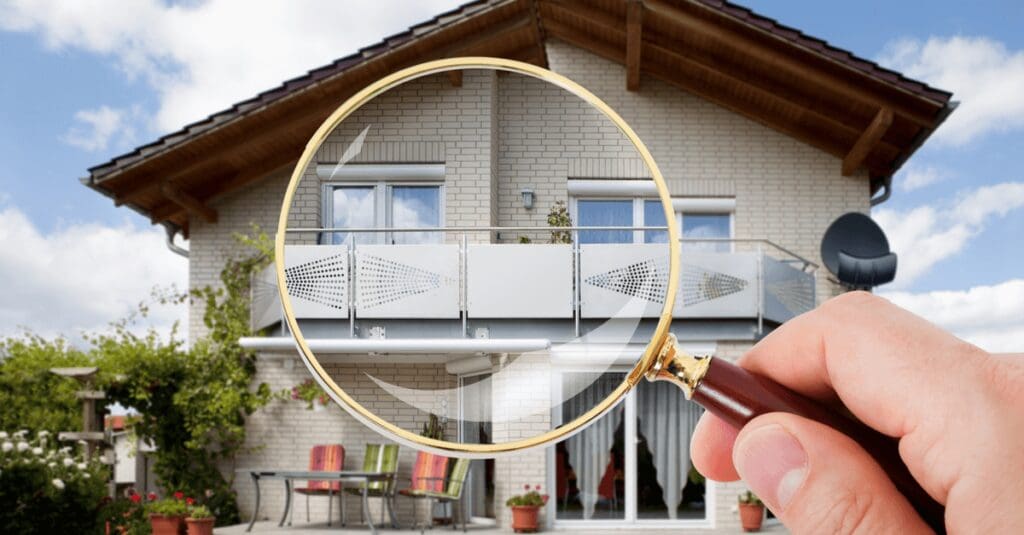Buying your principal place of residence is one of the most significant decisions you’ll make in life. It’s a process filled with excitement, hope, and—sometimes—stress. With such a big emotional and financial commitment, it’s easy to get caught up in the moment. That’s why it’s essential to take a step back and make informed, rational choices.
One of the best ways to ensure you’re making the right decision is by inspecting the property multiple times before committing to purchase. This gives you the chance to move beyond the emotional reaction of the first viewing and focus on the practicalities of living in the home.
The Power of Multiple Inspections
Seeing the property two or even three times before making an offer allows you to see the details that you might miss during your first visit. The first time you walk into a property, it’s often overwhelming—you’re imagining your life in this new space, thinking about how it fits with your dreams, and absorbing all the visuals at once. During this stage, it’s normal to miss important details, and that’s okay. The goal of the first inspection is to start assessing what you like and don’t like:
- What stands out to you?
- Are there deal-breakers?
- What changes are needed, and can you handle those yourself?
- Does the layout feel comfortable for your lifestyle?
Rather than focusing on small imperfections or easy fixes (like outdated paint or old carpets), try to evaluate the “big picture” of the property. Think about the flow of the rooms, the size of the spaces, and how the home will meet your needs.
Bringing a friend or family member can also help during this initial stage. They’ll have a fresh perspective and might spot things that you didn’t. For more tips on how to approach your early visits with the right mindset, check out The House-Hunting Adventure: Finding Your Perfect Home.
The Second Inspection: A Closer, More Practical Look
By the time you return for a second inspection, the emotional rush should have subsided, and you can focus on a more in-depth, practical review of the property. Now, it’s time to look at things with a critical eye and start checking for potential problems. If possible, ask the real estate agent if you can do a video walkthrough of the property during this inspection. This will allow you to revisit the property later and help when discussing it with contractors, inspectors, or family members.
Here are some key areas to focus on during your second visit:
Inside the Property
- Kitchens and Bathrooms: These are high-cost areas to renovate, so check them thoroughly. Open and close all cupboards and drawers. Ensure doors and hinges are functioning smoothly. Test the water pressure in sinks, and inspect under sinks for signs of leaks or water damage.
- Doors and Windows: Open and close every door and window. Are they sticking? Is there evidence of warping? Check the seals around windows to ensure they’re airtight.
- Wet Areas (Bathrooms, Laundry Rooms): Check behind the shower, near the bathtub, and under sinks for signs of mold or water damage. Look for any water stains or damp areas on walls and floors.
- Ceilings: Inspect ceilings for watermarks, stains, or sagging—these could be signs of a roof leak or previous water damage that could become an issue later.
Outside the Property
- Exterior Walls: Walk around the outside of the house and look for cracks, chipped paint, or damaged cladding. Even small cracks can indicate bigger structural problems.
- Roof Condition: Though you likely won’t be able to climb up to inspect the roof, check for obvious signs of wear like missing shingles or any sagging areas.
- Garden/Outdoor Space: Look at the outdoor area. Is it well-maintained? Are there trees or large plants growing too close to the house, which could damage the foundation or pipes? Consider the state of any fences or outdoor structures, as repairs in these areas can also be costly.
Add Another Layer of Assurance: Bring Your Buyer’s Agent for In-Person Inspections
When purchasing your principal place of residence, having your buyer’s agent accompany you to the inspection can provide invaluable support and peace of mind. While you’ll be physically present to explore and evaluate the property, your buyer’s agent can enhance the experience in several important ways:
- Expert Evaluation
Your buyer’s agent has a trained eye for identifying potential issues that may not be immediately apparent to you. They can spot red flags, such as structural concerns, outdated systems, or even cosmetic flaws that could affect your satisfaction with the home long-term. Their expertise allows them to assess the property objectively, helping you to see both the positives and negatives. - Negotiation Insights
A knowledgeable buyer’s agent can provide insights into how the property stacks up against similar homes in the area. They can help you understand the market dynamics and advise you on whether the asking price is fair based on comparable sales. If issues arise during the inspection, your agent can leverage their negotiation skills to advocate for repairs or concessions from the seller. - Comprehensive Review
With your buyer’s agent by your side, you can conduct a thorough review of the property. They can guide you through critical areas to examine, ensuring that nothing is overlooked. This may include checking for water damage, evaluating the layout for livability, and assessing the condition of essential systems such as plumbing and electrical. - Objective Perspective
Buying a home is an emotional journey, and it’s easy to become attached to a property before fully assessing its condition. Your buyer’s agent can provide an objective viewpoint, helping you focus on both the property’s strengths and any potential concerns. This balance can be crucial in making a confident, informed decision.
By involving your buyer’s agent in the inspection process, you’ll have the benefit of their expertise, ensuring you’re making a well-informed decision about your future home. They can help you navigate the complexities of the buying process, making sure that you feel comfortable and confident in your investment.
Don’t Forget the Third Look: Bringing in Experts
After the second inspection, if you’re still interested in the property, it’s time to bring in the professionals for a third visit. A thorough inspection by building and pest experts is critical, as it uncovers hidden issues that may not be visible to the untrained eye.
Did you know you can attend the inspection with the experts? Most people simply wait for the inspection report, but attending in person can provide incredible insight. You get the chance to ask questions, see issues firsthand, and have the inspector explain potential problems immediately.
For example, if the inspector finds small cracks in the walls, they can tell you whether these are just cosmetic or indicate a larger structural issue. Attending the inspection gives you a deeper understanding of the property’s current state and potential risks, making it easier to decide whether the home is worth the investment.
It’s far better to spend a little money upfront on thorough inspections than to deal with expensive repairs later on. If you’re unsure about the value of this step, here’s why you should always consider an external building and pest inspection for your new build. It’s a smart move whether you’re buying a new or existing property.
What Can You Reasonably Change?
During your inspections, always keep in mind what improvements you’re willing to make. Some issues, like old carpeting or worn paint, can be fixed relatively easily and inexpensively. But other problems, like a roof that needs replacing, major kitchen or bathroom renovations, or structural damage, require a larger investment of time and money.
Be realistic about your budget, skills, and time. Will renovations add long-term value to the property, or are they just necessary to make it livable? Understanding this distinction is crucial to making a sound financial decision.
Also, keep in mind that even if you plan to renovate, you should still negotiate the price based on the property’s current condition. Don’t overpay for a property with major issues just because you have a vision for what it could become.
Final Thoughts: Take Your Time and Be Thorough
Purchasing your principal place of residence is not something to rush into. By seeing the property two or three times, you’ll have the opportunity to move past the emotional excitement and really get to know the house. Each inspection should have a clear focus, from general impressions to detailed due diligence.
When you combine multiple inspections with the input of experts, you’re giving yourself the best chance to make a confident, informed decision. After all, your home is not just where you live—it’s also a major financial investment. Be thorough, be patient, and don’t hesitate to walk away if something doesn’t feel right.




